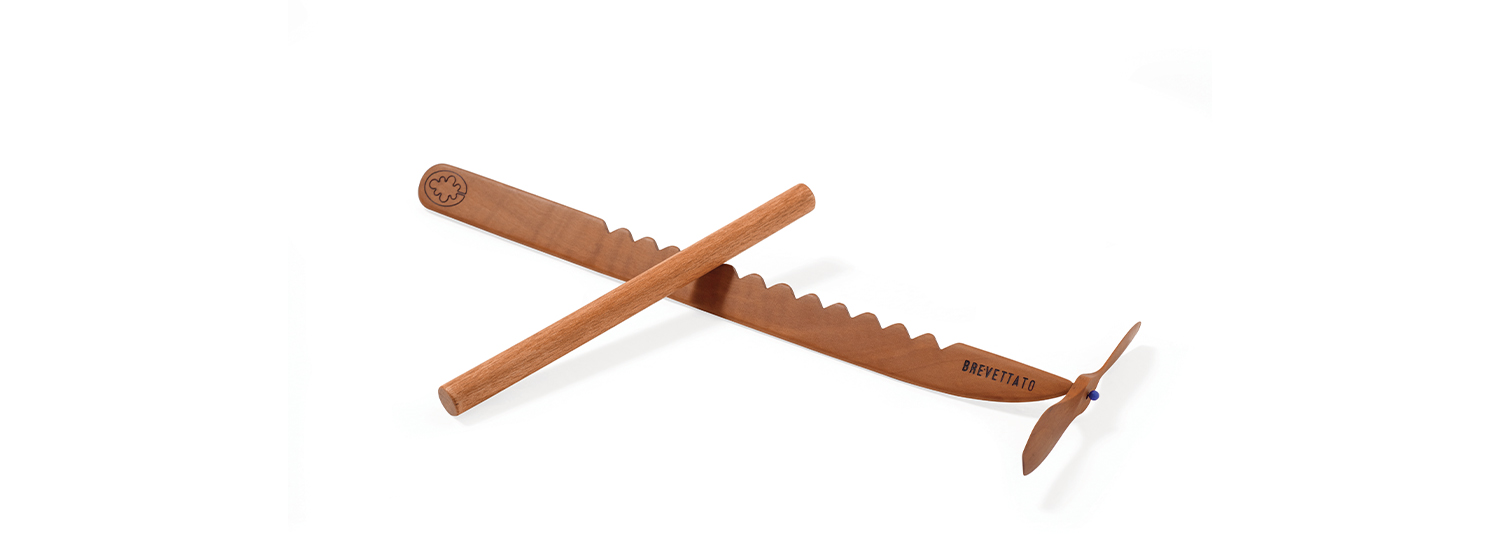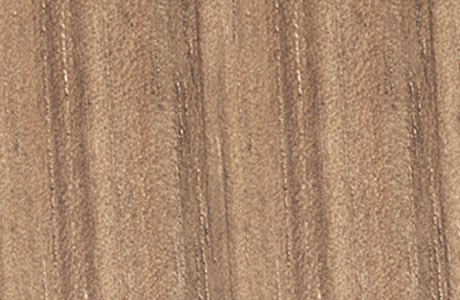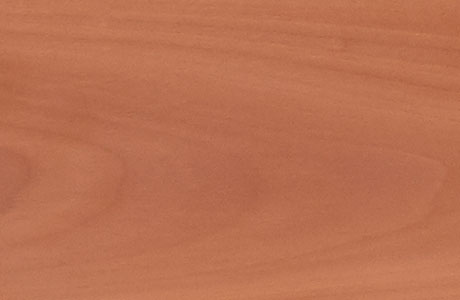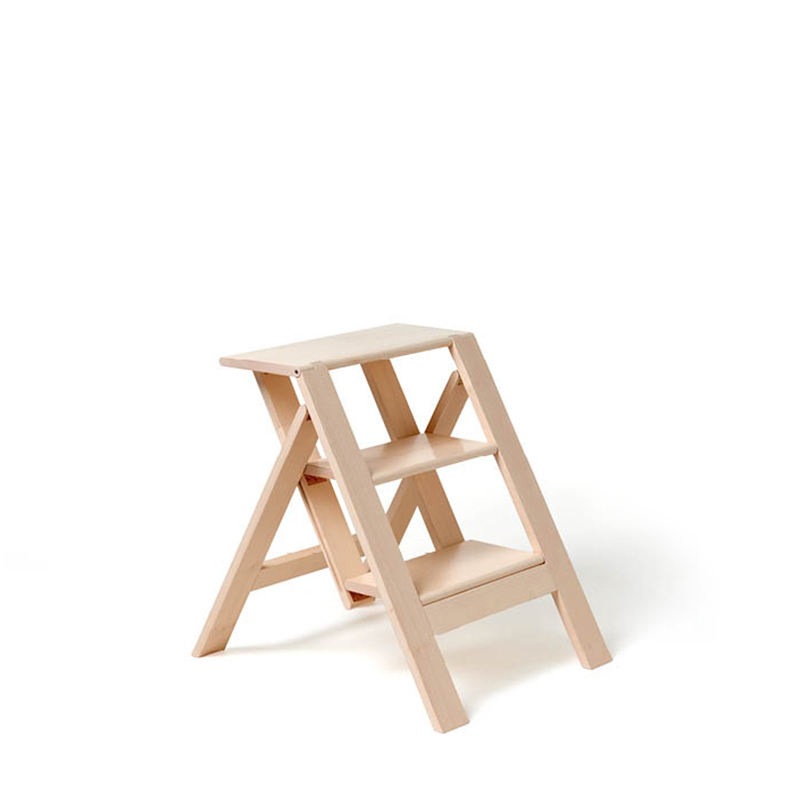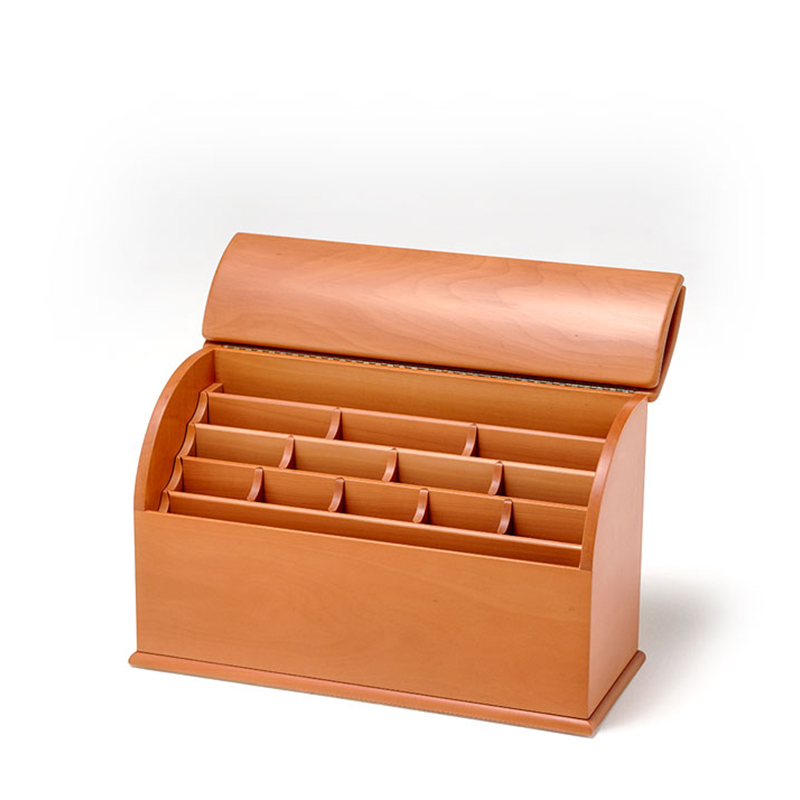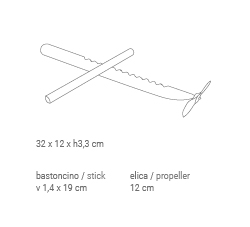A Dada-inspired “useless object”. With a propeller to be operated mechanically, with a dual rotation, clockwise and counter-clockwise. A perfect example of the playful creativity that distinguishes the Castiglioni family: clever, aesthetically sophisticated, but most of all fun. It performs no function, but keeps up the spirit.
Product Details
Technical specifications
Essence and finishings
Bottega Ghianda carefully selects the quality of materials such as essences, leathers and fine fabrics that make each product unique.
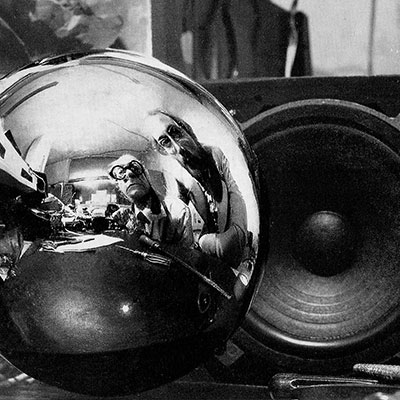
Livio e Piero Castiglioni
Livio Castiglioni was born in Milan in 1911 and graduated in architecture in 1936 in Milan. Together with architect Luigi Caccia Dominioni he opened a studio in which his brothers Pier Giacomo and Achille would later work. His interest has always been in light, sound and audiovisual installations. From 1940 to 1956 he was a consultant for Phonola and later for Brionvega. Together with his brothers he co-founded the ADI (Association for Industrial Design) in 1956; he later became the president (1959-1960).
Pietro Maria Castiglioni, called Piero, was born in Lierna in 1944; he graduated in architecture in 1970 in Milan, where he lived and worked, devoting himself almost exclusively to lighting design. In 1968 and 1973 he received a diploma of collaboration respectively at the 14th and 15th Milan Triennale.
From 1972 to 1979, Livio and Piero jointly ran their studio on Via Presolana, designing lighting systems for numerous art galleries, both public and private, as well as for hotels, offices, showrooms, shops, residences, and temporary exhibitions in Italy and abroad. The lighting fixtures, produced as special editions, were handcrafted in small series. Among these, the Scintilla lighting system stands out. After Livio’s passing, the studio continued its work in the same location with new collaborators.
